Collapsed outer wall of the Medico Dental Building, Pacific Garden Mall. | J.K. Nakata, U.S. Geological Survey
By Kathryn McKenzie
Thirty years ago, all of us were reminded of the immense power that lies beneath the earth, a complex network of fault lines and fractures in the earth that are mostly quiet — until they’re not. But on a warm October evening, the shaking seemed to go on forever, as the ground ruptured, buildings and freeway sections collapsed, roads ripped open, power failed and humans were reminded of just how puny they were.
Californians had another little wake-up call this week when two temblors hit late Monday (4.5 near Walnut Creek) and midday Tuesday (4.7 near Hollister), which jolted the Monterey Bay area as well. Local emergency service agencies are reminding people to check their earthquake kits and update their disaster plans. We also want to point out this story by one of our Young Media Workshop students on how to be ready for the next Big One.
Everyone who felt the Loma Prieta quake never forgot it. Here are some local memories of that fateful day.
Motorcycle madness
I was sitting on the back of a motorcycle waiting for the driver, who was in a bank. The cycle came off its stand and started rolling down the parking lot. Even though my feet couldn’t touch the ground, I steered it into a grassy area so as not to hit a car or person! We had both come home early from work to watch the Bay Bridge series game. That Series saved a lot of lives that day. The freeways were pretty quiet for that time on a weeknight. — Mary Lu Morgan Ruiz, Carmel
Trapped in San Jose
At 5:04 p.m. on Oct. 17, 1989, I was driving on Highway 17 approaching Lark Avenue, with the World Series on the radio. Suddenly, my little Honda started rattling. I thought I had a flat tire, but immediately the announcer exclaimed, “We’re having an earthquake!” and the radio went dead.
Traffic was diverted to the Los Gatos exit — bumper to bumper, no traffic lights, police directing. I was able to pull off into a restaurant parking lot along with dozens of other commuters. Police informed us that no one was to be allowed onto Highway 17 until its safety could be checked out. The grove of trees next to the lot swayed alarmingly during the ensuing aftershocks. Should I stay there overnight in my little car and risk being squashed by a falling tree? How would I let my family know where I was? What was happening in my town of Santa Cruz? We were all stuck on the wrong side of the Hill, milling around and worrying.
Among the throngs was a small, very pregnant Santa Cruz woman who offered to let stranded travelers stay with her and her friends in San Jose. I followed the little MG for miles along strange, darkened streets to the home of my new friend’s friends, a nice married couple featuring a very pregnant wife (it seemed to be a theme—it turns out that I was pregnant, too, but just didn’t know it yet!). Fortunately, no one went into labor that night.
It took until 8 p.m. to get through on the landline to my husband and let him know I was okay, and find out that he was okay, and that our neighbors were huddled out on the lawn and vowing never to go back into their house! The whole situation felt surreal.
I spent an unrestful night, feeling the continual aftershocks, but was able to drive home to Santa Cruz over Highway 9 the next afternoon, noticing many new little rockslides and waterfalls at the roadside, courtesy of the temblor. — Vicki Ward, Royal Oaks
Enlarge
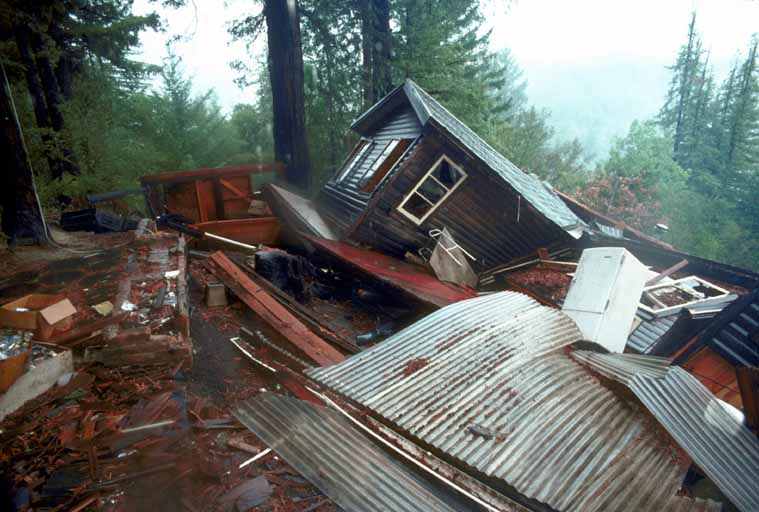
Follow the bouncing cars
Candlestick Park for the World Series! We were running late and still in the (landfill) parking lot. We heard the sound before we felt it, and initially thought it was the crowd cheering until all the cars around us started bouncing. We honestly didn’t realize it was as bad as it was, and we still went through the gates, although we didn’t go into the stadium.
We finally realized it was a bad one when the blimp turned and headed toward the city and we could see smoke in the distance. A small handful of people had fancy tiny ‘80s handheld TVs so we huddled around in groups watching the news coverage for a while. It took nine hours to get home to Monterey, as all the bridges were closed, so everyone had to go south to wrap back around to the East Bay. — Beth Brookhouser
Enlarge
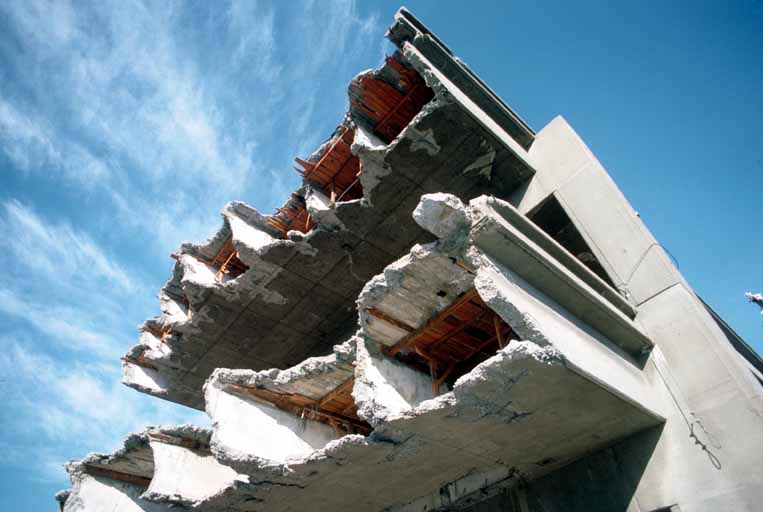
Housing heartaches
I was on the Monterey County Board of Supervisors. I represented North County, the hardest hit area with earthquake damage. I personally was on the third floor of the courthouse in Salinas when it hit. It caused the elevators to go offline and I came down the stairs even though they had separated from the walls inside.
My parents’ house in Pajaro had the chimney collapse into their kitchen. They lived in an RV for a couple of months until the house was repaired. I had one death in my district but we and the Red Cross ended up feeding over 500 displaced people three meals a day in Pajaro (from all over North County) for weeks after the earthquake. It was a sad time, lots of lost housing.
Supervisor Sam Karas and I and the Pebble Beach Company brought bagged lunches from The Lodge to feed the homeless. He and I and Clint Eastwood put on a fundraiser at the Monterey conference center to help the victims. We raised hundreds of thousands of dollars, part of which was used to build replacement housing in Las Lomas. — Marc Del Piero, Monterey
Enlarge
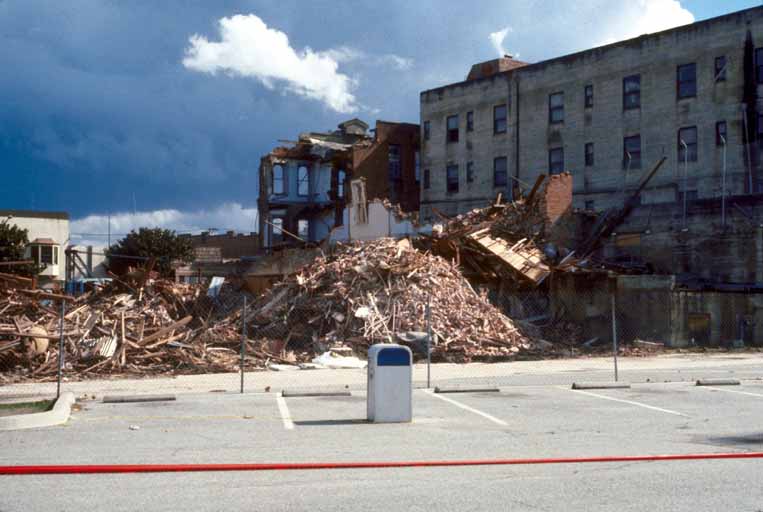
Touch and go in Santa Cruz
I was about to open the gate to my apartment complex in Fresno when I noticed that water was sloshing out of the pool though no one was in it. “Big one somewhere,” I told myself.
An hour later I was in the Fresno Bee newsroom while editors called around looking for a helicopter to take reporters and photographers to Santa Cruz 160 miles away. They figured the roads would be closed. We had people in San Francisco covering the World Series so we didn’t need anyone there. The bosses decided to focus on the Santa Cruz area.
An hour later, I was reclined on a cot in an air ambulance, a large helicopter usually used to transport trauma patients. There were five of us from the Bee.
The Bay Area was gorgeous from the air with lights out and a few scattered fires. Unfortunately the pilot didn’t know the Santa Cruz area and couldn’t figure out where to land, so he headed to the lights atop Ford’s department store on Pacific Avenue. As the helicopter slowly hovered downward toward the roof, first responders on top of the building waved arms at us. We couldn’t hear them but I’m pretty certain they were yelling “Don’t land here” or something mighty close to that.
As the chopper set down, the pilot turned and yelled at us. “Run, just run. I’m taking off in 10 seconds or they’re gonna arrest me. Run!”
We got off and ran, sort of. The rescue worker types yelled at us, asking what the hell was going on. I don’t know what my colleagues said but I just pointed at the pilot and said talk to him. By then, he was skyward.
The landmark Ford’s store, of course, was so badly damaged by the quake that it had to be demolished. The rescue workers rightly feared that our landing might speed up the process.
We were then off into the night to see what we could see in the dark. We filed our stories by the one working pay phone we found on Pacific. Then off to search for lodging. In the dark we found the Holiday Inn on Ocean.
“Any chance we could get rooms,” we asked the clerk.
“Pick a room. With the power off, we can’t book rooms or keep the doors locked, so help yourself.”
And so we did. — Voices columnist Royal Calkins
Enlarge
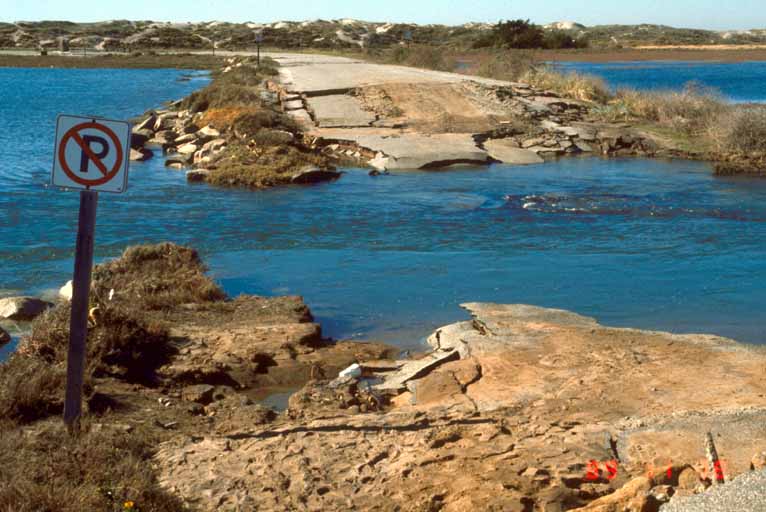
A snapshot in time
At the time of the Loma Prieta I was working as a retail photographer inside JCPenney in Northridge Mall in Salinas. I had just finished photographing 10-month-old twins of Secondino Muñoz from Castroville. I was explaining in Spanish the pricing and setting up the next appointment when the earthquake hit us.
Being on the second floor, we started swaying a lot, and the photo frames on the walls fell all around us. I grabbed one of Secondino’s daughters who was closest to me, pushing her under the counter and I tucked over her to protect her from falling frames. It was so loud, the building creeping and items falling and people screaming. We gathered all of Secondino’s children, 10-year-old twin boys, 9-year-old twin girls and the twin babies. (Yep, Secondino had three sets of twins).
We all were shaking from the experience and I walked them down the escalator (all the power was out in the building but the emergency lights were on) and out of the building to her car. We hugged and wished each other safe travels and she drove off to her home very stressed.
I went back into the store and found that two people were stuck in the elevator between the two floors. They didn’t get out for about an hour, and when released they didn’t understand why the building was such a mess, they didn’t know there was an earthquake and had thought that there was just a power outage that caused the elevator to stop.
I turned off all the camera equipment and did the best I could to lock things away, then drove to East Salinas where my 18-month-old son Caspian was staying with my mom, Tressie. There was so much traffic on the way across town, all the traffic lights were out, but I eventually found my son and mother at her home a bit rattled but they were fine. My mother had grabbed Caspian and ran for the doorframe during the shaking.
Years later, one of Secondino’s twin daughters started bringing her daughter to my studio to be photographed by me. That daughter told me that her mother still tells the story of how we rode out Loma Prieta together. — Susan Gerbic, Salinas
Enlarge
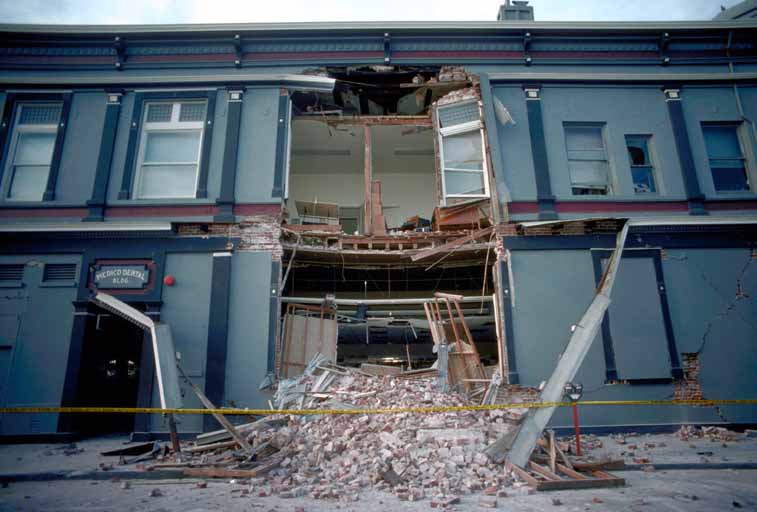
Shake, rattle and roll
Earthquakes are hard-wired into my DNA. The San Andreas Fault shimmies, shakes and rattles with more regularity down near the Mexican border, around Mexicali and El Centro, where I was raised. So rumblings from below don’t especially bother me anymore. I ride them out like I’m earth-surfing. I prefer them over typhoons and tornadoes.
I was working as the city editor for The Monterey County Herald during the Loma Prieta Earthquake. It was a doozy, sure, and it knocked out power and water, and structures collapsed here and there. It was my job as city editor to deploy reporters and photographers hither and yon to gauge and record the damage done.
Fortunately, I had already gained some professional experience covering a huge earthquake for the Imperial Valley Press as a young buck reporter a decade earlier. In fact, that 6.5 earthquake in Imperial Valley struck exactly 10 years and 2 days before Loma Prieta. At the time I was driving to Calexico, and the quake threw my vehicle all over the highway. When I arrived in Calexico I saw people standing outside in a daze. Buildings were down in Calexico, so I figured that the taller and unreinforced buildings in Mexicali, across the border, were probably in a heap. I crossed the border and started shooting photos wherever I saw rubble.
At some point, I ran across a couple of vehicles buried under a ton of bricks, literally, that had fallen from the facade of a shoe store in downtown Mexicali. By the time I got back to the newspaper office in El Centro, the chief photographer from the Associated Press in Los Angeles had shown up and he was gathering film from local reporters. At one point he sprung out of the darkroom and hollered, “Holy shit! Who took this picture of an earthquake that says ZAPS on it?”
I hadn’t seen it in my viewfinder when I shot the photo, but the name of the shoe shop with the brick facade was named ZAPS, short for zapateria, and the store sign remained intact. The picture became famous at the time — an earthquake photo that literally said ZAPS — but I never thought to keep a copy. Oh well.
Since earthquakes are in my California DNA, I managed to keep my cool when Loma Prieta hit. Power was knocked out in Monterey for a couple of days, but we worked out a deal with the folks at the King City Rustler. We managed to send a couple of editors down to South County, where we cranked out a special earthquake edition that subscribers received the next afternoon. — Voices co-founder Joe Livernois
Enlarge
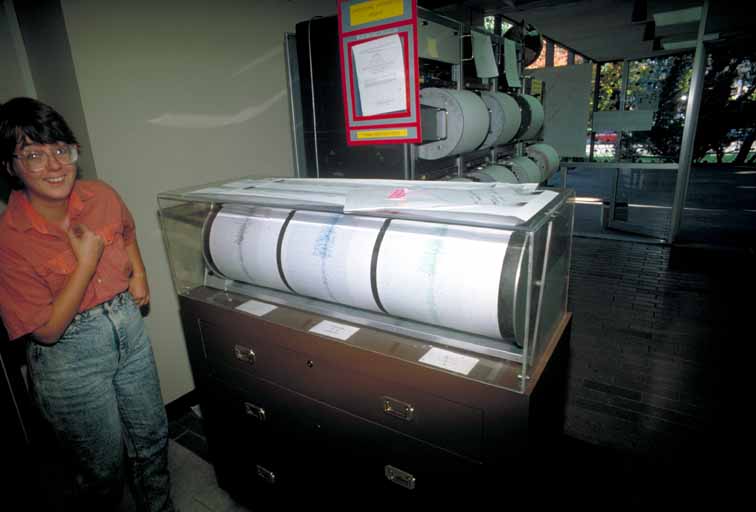
Swaying at the Series
Upper deck, Candlestick Park, A’s-Giants World Series. Thought I was a goner. — Mac McDonald, Dana Point
All hands on deck
I was on the NOAA ship McArthur, about 600 miles west of the Galapagos. We had a teletype machine and we got a page of news daily. The news said the Bay Bridge had collapsed and we thought that meant the whole thing. Also, we had no idea what had happened to our house; thankfully nothing! — Robin Welch, Salinas
Darkness before the light
I was an editor at the San Francisco Examiner and had taken the day off. I had tickets to the Giants-A’s game but forgot them at home. When I drove with my buddy, Jack, back from my home in San Rafael, he noticed something funny when we hit Lombard Street. “I think it might be an earthquake,’’ he said. “Ah, probably nothing — they have these little jumps all the time,’’ I reassured him, as we went on our merry way towards Candlestick Park, which looked like a disaster movie by the time we drew near.
We did a U-turn, and I dropped him off at Brannan Street, which was already gaping, somehow found a place to park, and found my way back to the Examiner office, which was completely dark, but for the flashlight held by Topy Fiske, the Examiner art director and one of the few management personnel who hadn’t managed to get herself comped into the game.
Even though there had been decades — literally, since 1906 — to plan for such an event, neither the Examiner nor the Chronicle had a working generator, and had to outsource printing to other facilities.
As the rest of the management crew drifted in, spirited argumentation ensued on just how, when and why to cover the quake. Our veteran managing editor, the late, great Frank McCulloch, an ex-Marine who had seen it all and then some, in his stint as Time magazine bureau chief in Saigon, was flummoxed by the chaotic spectacle. When Frank tried to remind the assembled group, huddled in darkness, that the epicenter of the quake was in Watsonville, he was shouted down by callow newsies focused on the damage in the Marina. News is what happens to editors.
An old school reporter named Carol Pogash had been stuck on the Bay Bridge during the quake, and filed a first-person account which distinguished itself from the rest of the news coverage — including the Chronicle and august publications like the New York Times — which radically overestimated the number of dead.
When the dust cleared, and the lights came back on, newsies gathered together, eyes somewhat averted, and picked up the pieces. And oh yeah, when the Series finally resumed, the A’s swept. Easily. — Paul Wilner, Seaside
Enlarge
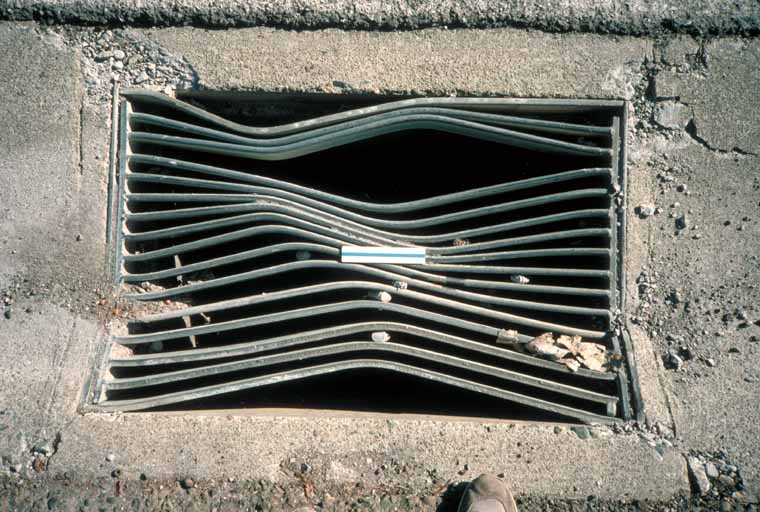
All the news that fits
I was teaching at Echo Valley School in Prunedale. I was staying late in my portable classroom when the shaking started. I had a big sturdy desk so I dived under it until the shaking had stopped. When I got home, our house in Monterey was mostly undisturbed. I believe there were a lot of power outages in the area. As a journalism guy, I was impressed that the San Jose Mercury News didn’t skip a beat and delivered the paper the next morning. Neither rain nor sleet nor earthquakes, etc. — Arlen Grossman, Del Rey Oaks
Headlines and headaches
At 5:04 p.m. Oct. 17, 1989, I was at work in the newsroom at the Merced Sun-Star. My coworkers and I noticed the reception had gone out on a little 13-inch TV the sports department had turned on for the World Series game at Candlestick Park.
Then, we felt it. Seventy-seven miles from the epicenter in the Santa Cruz Mountains, the newsroom floor shook. A minute later, I stood up from my desk, but suddenly felt extremely dizzy and had to sit back down.
Sketchy news of the quake was coming in, though accurate information was thin early on (pre-Internet, of course) and the extent of the catastrophe was difficult to gauge. We took lots of calls in the newsroom, including some from our own family members wanting to know the status of roads and phone service in the Bay Area. I had a number of family members there, including my mother and sister in Menlo Park. It was a nerve-wracking two hours or so before coworkers and I learned our loved ones were safe.
It was chaotic from the start — we were trying to focus on doing our jobs and coming up with a game plan for the news coverage, while also juggling with the mystery of what lay in San Francisco and beyond — mountains of rubble, collapsed bridges, hundreds dead?
Reports indicated heavy damage in San Francisco’s Marina District, and in Santa Cruz and Watsonville. Our two staff photographers asked to go cover the story; however, the Sun-Star brass said no to paying for it. Undeterred, both photographers grabbed their gear and jumped in their cars — one went to Santa Cruz and Watsonville, the other to SF. We were able to publish their very impressive work in second-day coverage.
My role that night was to lay out the front page. With deadline fast approaching, I had to decide on a lead photo after sifting through dozens of the slick-surfaced images spilling out of the AP Laserphoto machine. My next task: pull the latest AP story, which reported a death toll of 200. My eventual headline: “200 die in Bay Area quake.”
The real toll would end up much lower – 63, by many accounts. I learned a lot about headline writing. But mostly I was grateful there were many fewer deaths than what my bad headline reported. — Christy Hoffknecht, Seaside
Enlarge
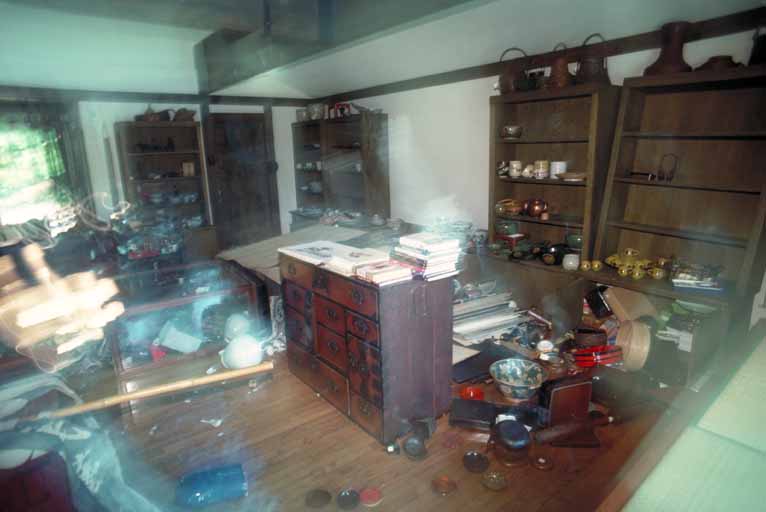
Dinner under the table
I vividly remember: I was eating yellow cheese and my mother picked me up and held me in her arms. I was 3 years old. My big sister and I got to eat dinner under the table the rest of the week, on our Flintstones placemats, which was pretty great. This was in Oakland. Much later, I learned that a freeway overpass a couple miles from my house collapsed at that moment, killing 42 people. — Andy Moskowitz, Santa Cruz
Baby on board
I was in Gilroy, coming home from work, and suddenly my car felt like it had four flat tires. I stopped at the side of the road to check, and strangely, there were numerous other people doing the same thing. It was comical, really. I got back in the car, turned on KGO, and there was someone talking about the Bay Bridge collapsing. That’s when I realized there had been a massive earthquake.
I drove home to Aromas, which sits almost directly on top of the San Andreas Fault, not knowing if my house was still standing. It was, although all the cabinets had belched out glassware and dishes, mixing with food from the refrigerator to form a dismaying layer of wreckage in the kitchen. Miraculously, our 30-gallon fish tank had moved about a foot over on its stand, sloshed half its water out, but didn’t fall.
There’s an unusual coda to my quake story. When Loma Prieta occurred, I was newly pregnant with my first child. Seven months later, I was on maternity leave, and we were still experiencing aftershocks from the Oct. 17 quake. On one particular day in April, Aromas shook with constant, huge aftershock temblors.
I drove to Gilroy to see my OB-GYN, who told me, “Your blood pressure is sky-high.” Not surprising. Although my due date was April 15, I’m convinced that all the external commotion made my son decide to stay put for another week. He finally arrived on Earth Day, April 22, 1990. — Voices writer/editor Kathryn McKenzie